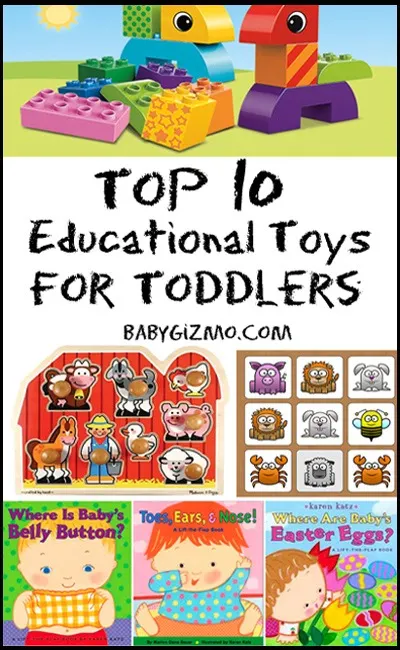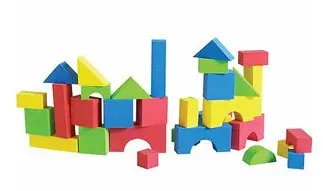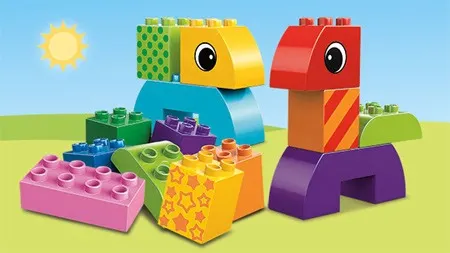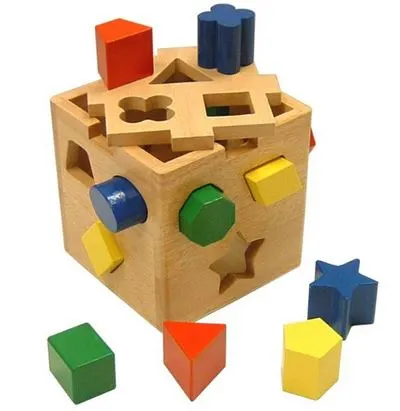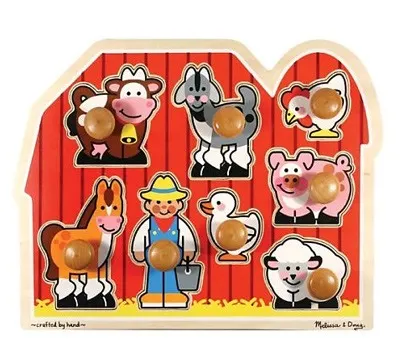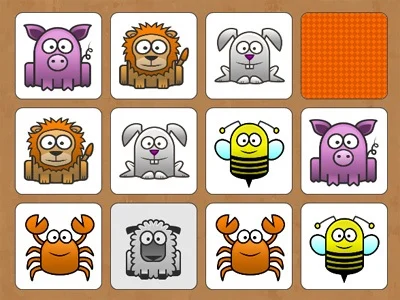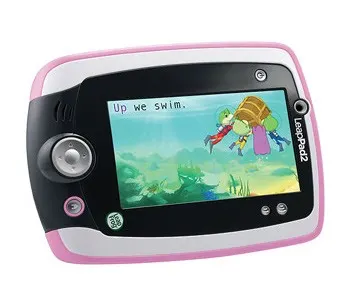For young children, learning is done through play. That’s how they grow. And toys are the tools they use to build their future selves. Why do you think toddlers are so active? They want to discover things. And the more they discover, the more they develop their minds. Toys can act as catalysts for intellectual development. Choose the right ones and you create a play environment that’s fun and conducive to learning.
1. Blocks
Blocks teach young toddlers to use their hands. Blocks are easy to pick up and easy to manipulate. They come in different shapes, sizes, and colors, so they can’t help but introduce children to those concepts. When they have letters and numbers on them, even better—they’ll be your child’s first brush with reading and maths. And when toddlers start stacking and building with blocks, that will allow them to practice trial and error, and give them a feeling of accomplishment when they do stack.
When it comes to building things, we recommend colorful plastic or foam blocks. Edushape, Mega Bloks, and Duplo are easy for little hands to hold. Later on, when the toddler is closer to three, they may enjoy wooden blocks as they use them to build walls and castles.
2. Legos
As children grow older they find themselves looking for construction toys with more versatility. Toys that can take on any shape and hold them indefinitely, but which can also be recycled endlessly into fresh new forms. And what can all those better than a big tub of Legos? You may have to start wearing slippers around the house, but your child will get a boost of confidence with their fine motor skills and visual-spatial ability. Blocks are great, but small bricks are for big kids.
3. Shape Sorters
Shape sorters come in all sorts of sizes and configurations. The simplest ones, for toddlers younger than two, have holes shaped like circles, squares, rectangles, and triangles. The more advanced ones, for kids three and older, have holes shaped like pentagons and crescents. The case itself is usually boxy, but some are spherical to encourage children to turn them in their hands. Some of the latest shape sorters even light up and play little tunes when the child inserts the correct shapes.
Shape sorters teach young toddlers about cause and effect and also object permanence. When they put a plastic piece through its hole, it disappears, but it’s still there when the toddler looks inside the container. Shape sorters also improve finger dexterity, which is handy when kids are learning to write or use craft scissors. The toys make wonderful additions to daycare centers, preschool classrooms, and, of course, to children’s homes.
4. Puzzles
Shape sorters are a simple kind of puzzle. The goal is to get all of the pieces into the container—or get them all out. But there’s more than one kind of puzzle, and they range from simple to mind-boggling. This is a good thing! Kids need to be challenged intellectually and a mind-boggling puzzle may be just the thing. We recommend starting out with puzzles that are just four to six pieces, with big wooden knobs to make pieces easier to set into place. Simple shapes like circles or squares are also good. They pieces will fit no matter which way they’re arranged. Puzzles with picture guides are equally suitable for the young toddler.
5. Memory Games
Memory games often involve card decks, especially decks with two of each kind of image. They can be numbers, letters, or pictures. The cards are mixed up, placed face-down, and then spread over a flat surface. Kids can play by themselves or with others. Memory games are very common toys for toddlers because they teach children to concentrate—to focus on using their visual memory. And that does amazing things for their cognitive skills. Memory games can also encourage children to interact with one another.
6. Pretend Toys
With pretend play, children can become whoever they want to be. They get to see what it’s like being a doctor, a chef, or anything else they can think of. They learn to solve problems by roleplaying situations, and to have conversations while playing different roles. These can only improve their resourcefulness, abstract thinking, and social skills. Stepping outside of yourself is a good way to expand one’s worldview.
7. Crafts
Crafts such as drawing, coloring, and cutting require fine motor control. They’ll need this when they’re learning to feed and dress themselves, all the way to tying their shoes and writing. It goes beyond physical coordination, however. Doing art, even at this level, will teach your child to concentrate. It’s important to choose arts and crafts that match your child’s abilities. Successfully competing projects will give them something to take pride in. As you and your toddler explore more crafts, you can introduce them to more challenging tasks. They’ll love spending time with you as you create things together.
8. Art Supplies
Crafts are one thing. Art is another thing entirely. The difference is that the former will give you something to stick to the fridge door, with while the latter will give you something you can hang on a wall, in a picture frame. Toddlers find their creative side when they do art, and this helps them become curious, confident, and thoughtful learners. For very young children, art and early writing skills are one and the same.
9. Electronic Toys
Electronic toys are designed to engage children. They make learning fun by teaching through doing, rather than through passive watching. This keeps kids focused for longer periods. Speaking toys have been shown to facilitate speech and pre-reading skills. Some teach phonics and others teach vocabulary.
10. Picture Books
No playroom is complete without a good store of picture books. Toddlers love the bright colors and simple imagery, as well as the repetitive text that focuses on everyday events. Children this age enjoy looking at the same book over and over. They also enjoy having it read to them many times. It doesn’t matter if they know how the story goes. The books don’t even need words in order to be fun! Toddlers have the imagination to create their own stories.
Energetic kids can be quite rough when handling books, so it’s best to have a few hardboard books for them to play with. They may also enjoy pop-up books and lift-the-flap books, but be ready for some books to be torn to shreds.
About The Author: Katrina is a freelance journalist based in Sydney currently writing for Yogee , as a mother of two she writes on many topics and is especially enthusiastic about family, kids and toys.

